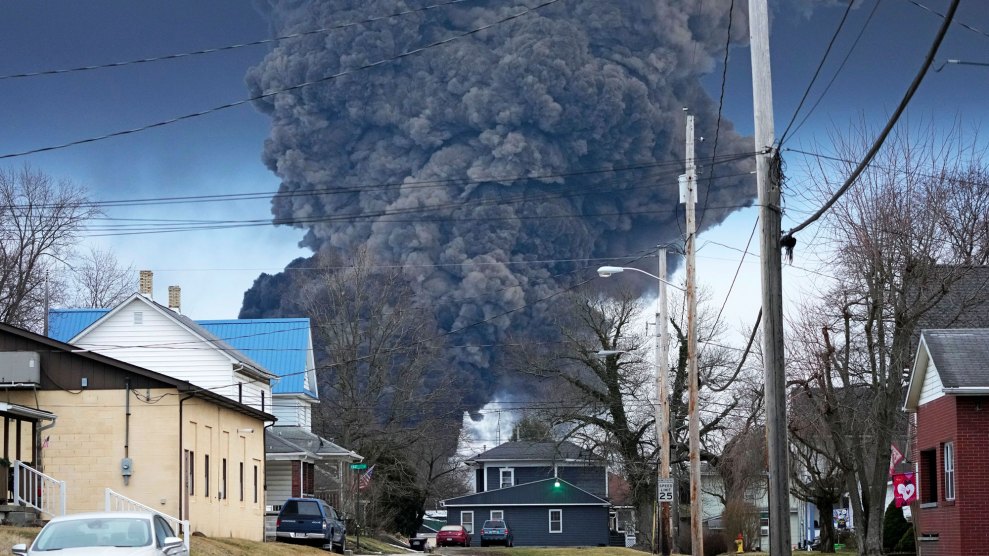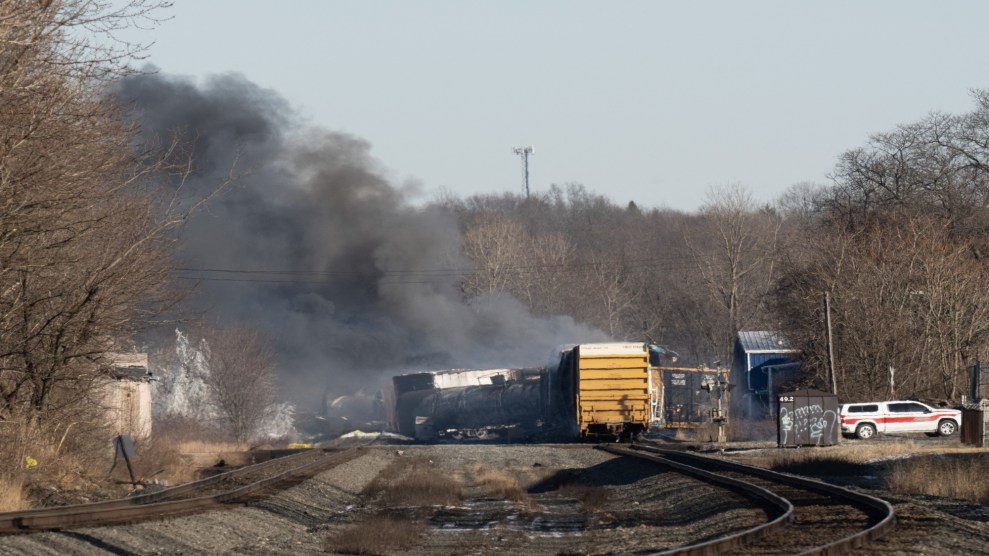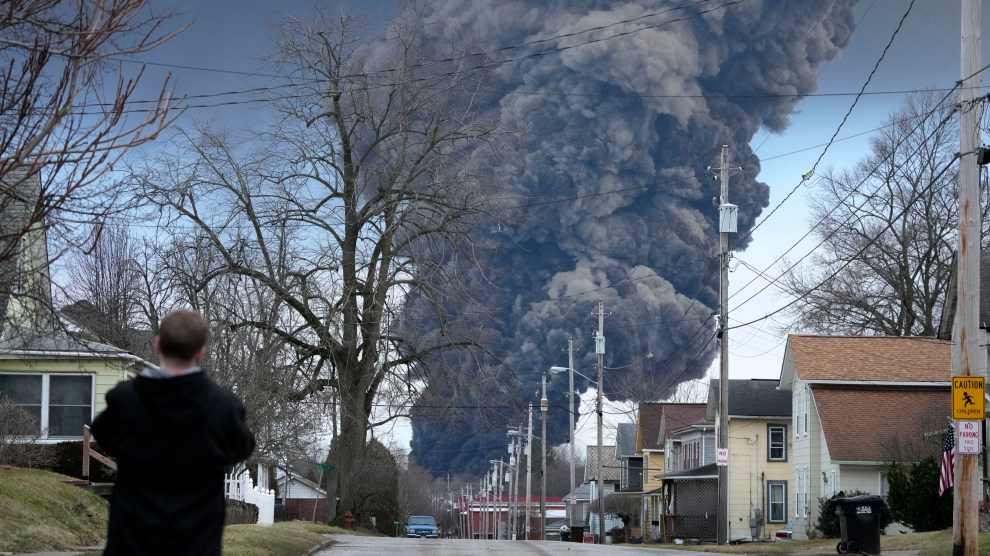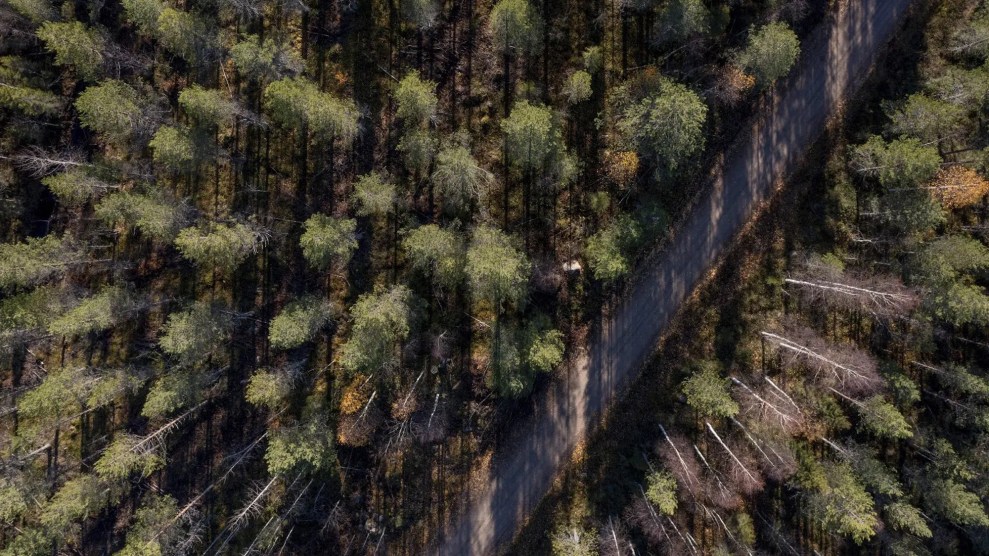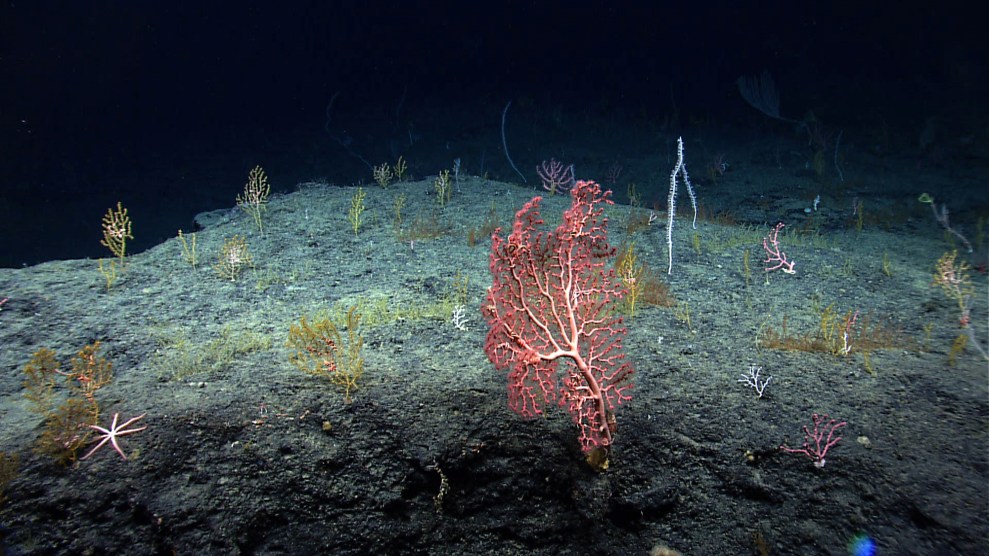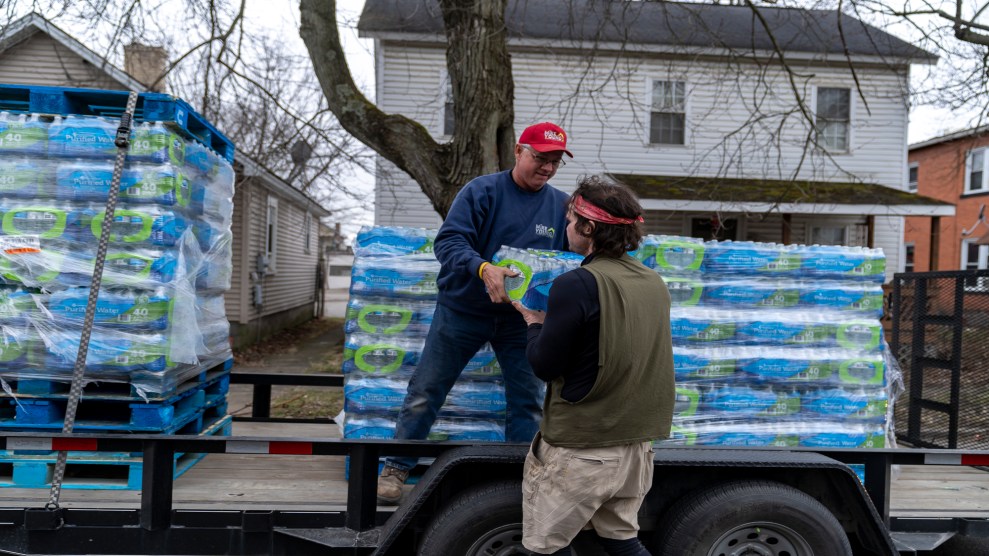
Water is distributed to residents of East Palestine, Ohio, who are feeling frustrated by mixed messages about the safety of their air and water.Michael Swensen/Getty
This story was originally published by the Guardian and is reproduced here as part of the Climate Desk collaboration.
During his Thursday visit to the site of a fiery train derailment that may have poisoned a small eastern Ohio town with a range of highly toxic chemicals, the Environmental Protection Agency chief, Michael Regan, told residents: “All families need to know that they are safe.”
But Regan’s words, along with those from the Ohio governor Mike DeWine’s administration and Norfolk Southern officials, have been of little comfort to Jami Cozza.
After evacuating for days after the February 3 derailment, she was told it was safe to return home, but a chemical odor still lingers in her flat. She urged a Norfolk Southern official to visit, and the company is now offering to pay for her relocation over safety fears.
Cozza noted East Palestine residents were told the municipal water was safe to drink, but also advised to buy bottled water, and many have complained of rashes after they shower. Residents were told they only had vinyl chloride to fear, then the list of dangerous chemicals spilled by the train grew. Federal agencies may not release the full list of chemicals for months.
Each day seems to bring new contradictions and every bit of information from officials feels like it raises more questions than it answers, Cozza said. The uncertainty is generating a deep sense of distrust.
“People are just angry but they don’t know who to be angry with because we’re not getting enough information to know who to be mad at,” Cozza added. “‘The air is fine, but don’t go outside. Your water is fine, but drink bottled water.’ You can’t trust them.”
About 50 out of 141 cars on the Norfolk Southern train derailed and exploded in a towering fireball over the town of 4,700 at the edge of the Appalachian hills. The fire burned near tankers carrying vinyl chloride but caused no immediate injuries. Two days later, officials feared a “major explosion” and conducted a controlled burn of vinyl chloride as a prevention measure.
Most residents had evacuated, and on 8 February they were given clearance to return, but many still see dangers. At the site of the wreck, crumpled and charred tanker cars still lay in the mud aside the tracks.
In the immediate vicinity and in pockets throughout the city, a potent chemical odor hangs in the air. Residents have described it as similar to turpentine or bleach, and said it “sticks to your nose.” Breathing it in for a few minutes may leave a metallic taste “like pennies.”
In recent days, some have reported dead pets or foxes, and the birds or outdoor cats they feed have disappeared. A chemical sheen still coats parts of small creeks that run through town, and dead fish have been found throughout local waterways as the pollution plume moves downstream. Temporary dams placed throughout the creeks pool the chemicals, which are sucked out with industrial pumps that filter the water.
The ongoing issues are what alarms Candice Desanzo. Like many neighbors, she wants to leave, but her family does not have enough money. She fears for her children and husband who have developed rashes after bathing. As she discussed the plight on her front porch, her eyes were red and swollen, and one of her children had gone hoarse, symptoms she said developed after the wreck.
“I can’t help but feel like I’m slowly poisoning my kids by staying,” she said.
Some suffering from symptoms are skeptical of local physicians’ diagnoses. They have been told they have eczema or a sinus infection, or have been given antibiotics. Some scientists have advised residents to call the Poison Control Center because family physicians are not trained to treat chemical exposure.
Children returned to school early in the week only to find a chemical smell in the East Palestine high school hallways, despite the fact that custodians had cleaned, said Jenna Cozza, niece of Jami Cozza. A contaminated creek runs next to the school, and children are “stressed [and] worried” she said, adding that she lives in “constant fear of this tragedy happening again. “When I smell that chemical smell it takes me back to when all this happened, and I panic and get anxiety from it,” she said.
Some also question air test results. Though the EPA website states it has tested air in nearly 500 homes, Norfolk Southern hired contractors to conduct the studies, so some are skeptical of the results. The rail company depleted more of its remaining credibility when it refused to take part in a Wednesday town hall meeting over alleged threats it had received.
“At this point nobody trusts them, so we don’t want to hear what they say is going on in our homes … they’re going to tell us whatever the hell they want,” said resident Chris Wallace.
A company spokesman on Wednesday highlighted more than $1.5 million spent on resident assistance, including direct payments of $1,000. Norfolk Southern this year announced $10 billion in stock buybacks and reported $3.2 billion in profits last year.
Residents say $1,000 will not cover much of the fallout. As Jackie Johnson picked up sticks in her large yard just a few blocks from the wreck site, she said she no longer feared the health threats, but said her life had been damaged in a different way.
She and her husband just retired from the Federal Bureau of Prisons and had planned to sell their house so they could buy a new home in Columbus near their grandchild. They were waiting for home prices to inch up a bit further before selling their tidy house, but the wreck has likely cratered their property value. Their life plans are indefinitely on hold.
“It might get to a point where we don’t have an option—we’ll have to sell it for what somebody will buy it for,” Johnson said.
Cozza said Norfolk Southern has offered to pay for her relocation because her front door is mere steps from a creek; the contaminated water will likely leak into their basement and she has a three-year-old child. But standing outside her home, she motioned toward her neighbors, who are also within about 50 feet of the creek. They have not received the same offer. “Their kids deserve to live, just like mine do,” Cozza said.
Up Market Street, about two-thirds of a mile from the wreck, Desanzo wonders why the company is not paying for her to relocate, or for more of her costs. Officials considered Cozza’s home to be safe, she noted, until Norfolk Southern later changed its assessment. Desanzo wonders about her home’s safety. She has received contradictory information about how to clean her home and suspects she made her clothes worse by washing them with city water.
“We just need answers,” she said in tears. “This city deserves answers and compensation.”

